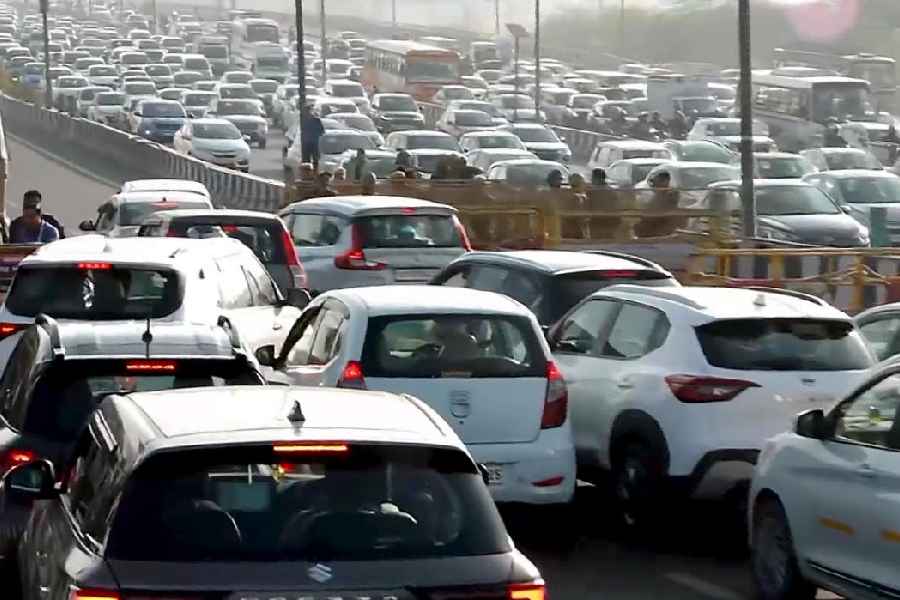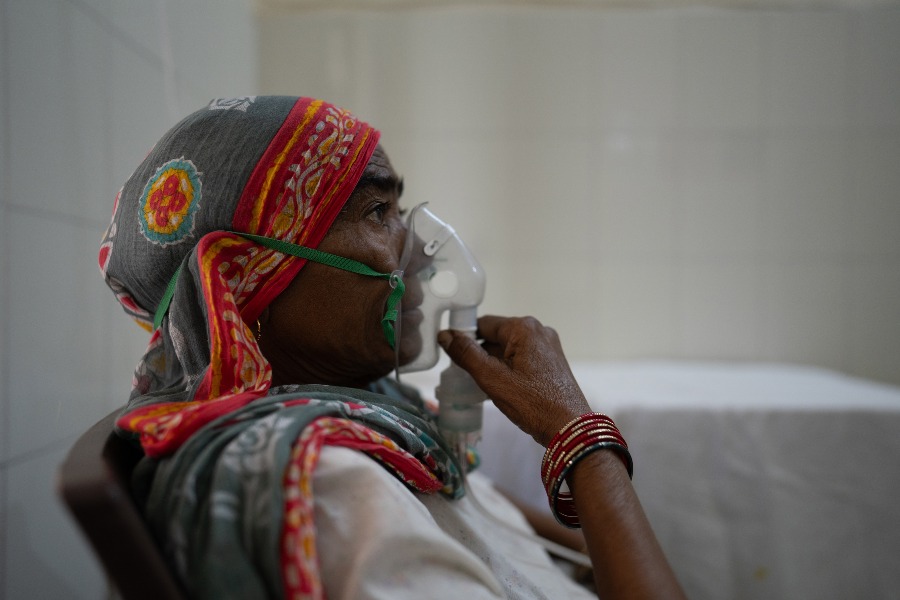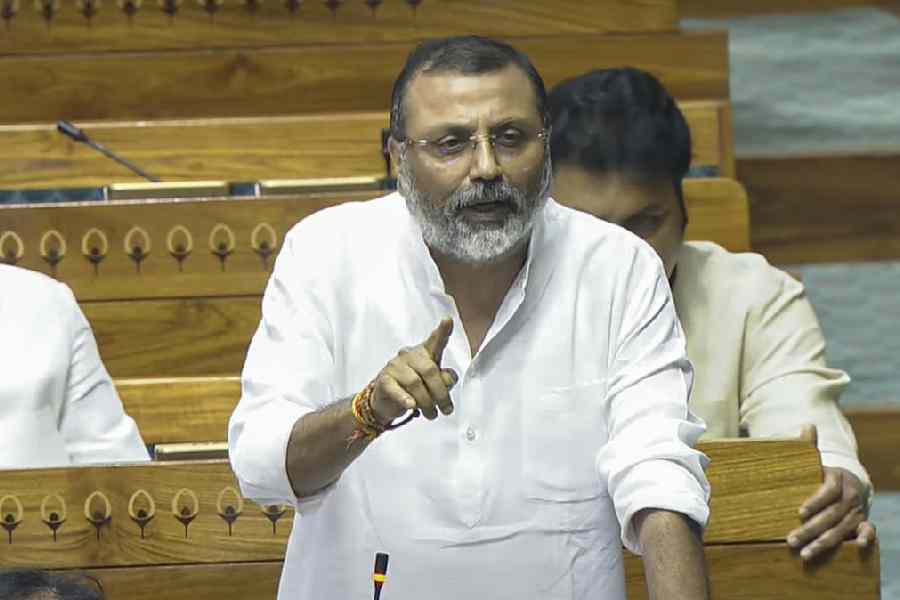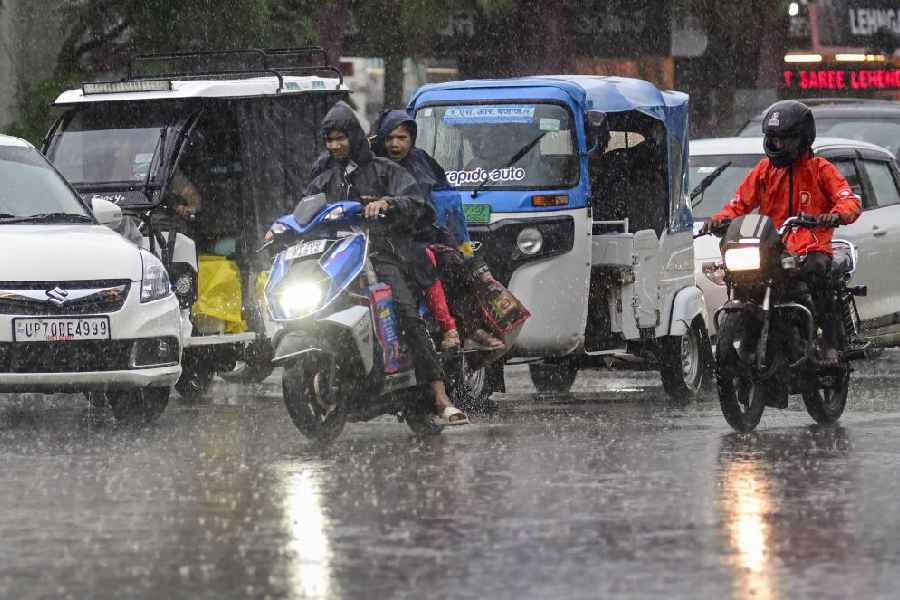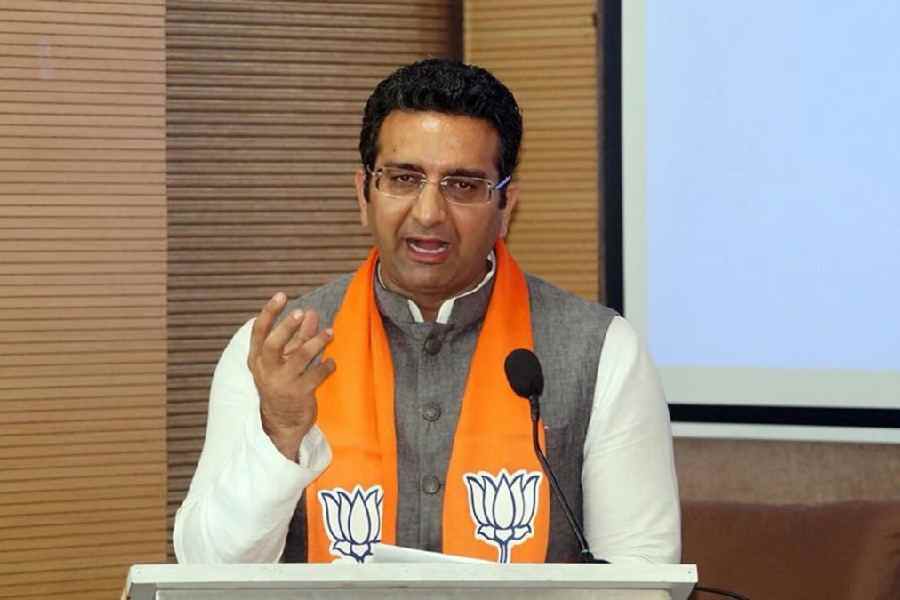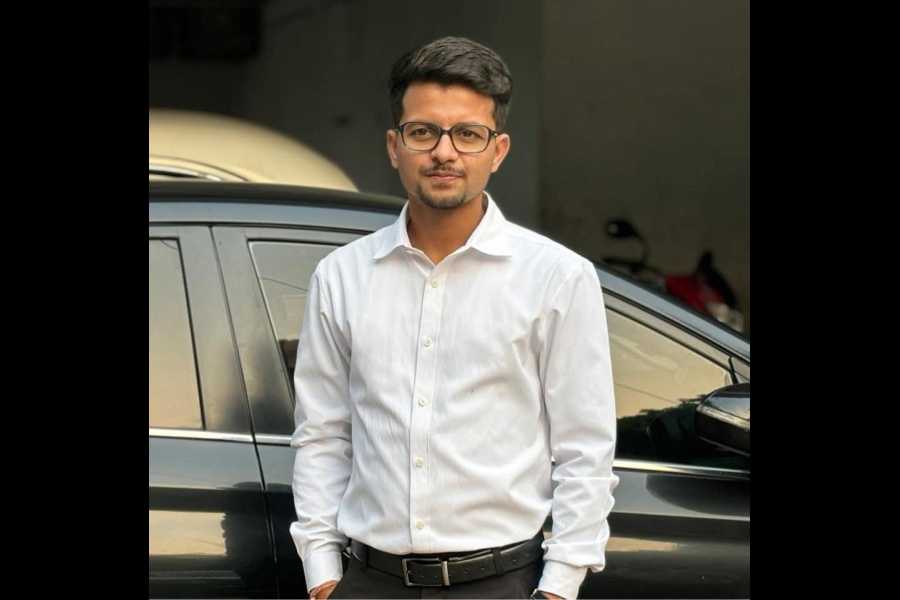Every nook and crany that Calcuttans pass by every day came alive with stories of the freedom struggle this Independence Day during the Vande Mataram — The Independence Day Walk.
The walk, organised by Calcutta Walks in association with The Telegraph, saw 20 participants, including a Manchestar-based woman visiting the city after 40 years.
The tour started with a brief on Gandhiji's Calcutta connect, especially his fast at Beleghata that helped stop the riots just after Independence, and ended at Presidency University, the cradle of the Young Bengal movement.
The walkers went through portions of what the British called the “Black Town”, including the Forward Bloc office, Pratap Chatterjee Lane, where Bankim Chandra Catterjee and Nazrul Islam had lived, and the memorial to the WW I soldiers of the 49th Bengalee Regiment at College Square.
Rith Basu, who walked the walk, brings snatches from the three-hour 14-stop tour.

The walkers at the university, once known as Hindoo College. The talk veered to Netaji, whom the college had expelled in connection with an assault on professor E.F. Oaten.
Netaji had apparently said, “thank you very much”, when the principal told him that he had been expelled. The organisers spoke of Derozio and his Young Bengal Movement, Raja Rammohan Roy and Acharya Prafulla Chandra Roy, founder of Bengal Chemicals.

The participants took the stairs to the fifth floor of the Central Avenue address to be left spellbound by two exhibits: the wooden chair used by Netaji Subhas Chandra Bose and an urn (circled) containing soil from Moirang, Manipur, where the Azad Hind Fauj had hoisted the Indian flag in 1944.
The walkers were told that Netaji had formed the Forward Bloc on May 3, 1939, and was its first president. Rashmi Dave, who had reached Calcutta from Manchester, was thrilled to learn that the party still contests elections. The bonus: every participant got a Netaji badge.

Many of the participants said they had seen a memorial at this place that has a huge swimming pool opposite Calcutta University. But today they got to know it was a memorial to the soldiers of the
49 Bengalee Infantry Regiment who had fought for the British in WW I. “The Bengali bhadralok had
responded when the British announced the regiment, saying self-rule would be the reward at the end of the war… that, of course, proved to be a farce,” Anirban Dutta, one of the guides, told the walkers. Kazi Nazrul was part of the regiment. Netaji had been rejected for poor eyesight.


Rayaan Ibrahim, 8, was elated to read Netaji’s words, “Give me blood, I shall give you freedom”, on a plaque outside the building. “This is where Surendranath Banerjea had organised a national conference in 1883, which was the precursor to the formation of the Indian National Congress,” Ramanuj Ghosh, one of the organisers, told the gathering. The walkers got to know what the British used to call Banerjea — Surrender Not — as many felt the wooden chairs with “IA” inscribed on them that have stood the test of time.

The Bengal Theosophical Society stands for the Irish influence on the Indian freedom struggle. The society had greatly influenced the Brahmo Samaj. In 1916, Annie Besant, Irish by birth, of the Theosophical Society, along with Lokmanya Tilak, launched the All India Home Rule League.
Just next door is the house where Rishi Aurobindo stayed in hiding.

The walkers got to know the little-known street where Bankim Chandra Chatterjee had spent the last seven years of his life. The house has now been turned into a library. A few metres away is the house where Kazi Nazrul Islam had stayed for a couple of years.
Pictures by Sayantan Samui



